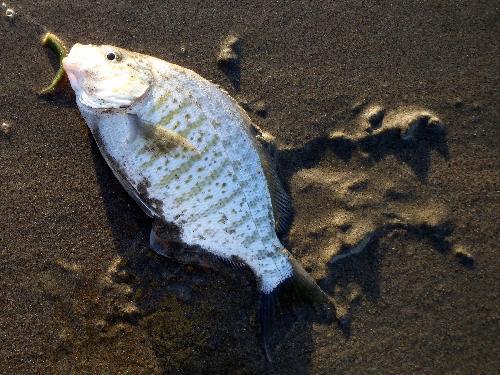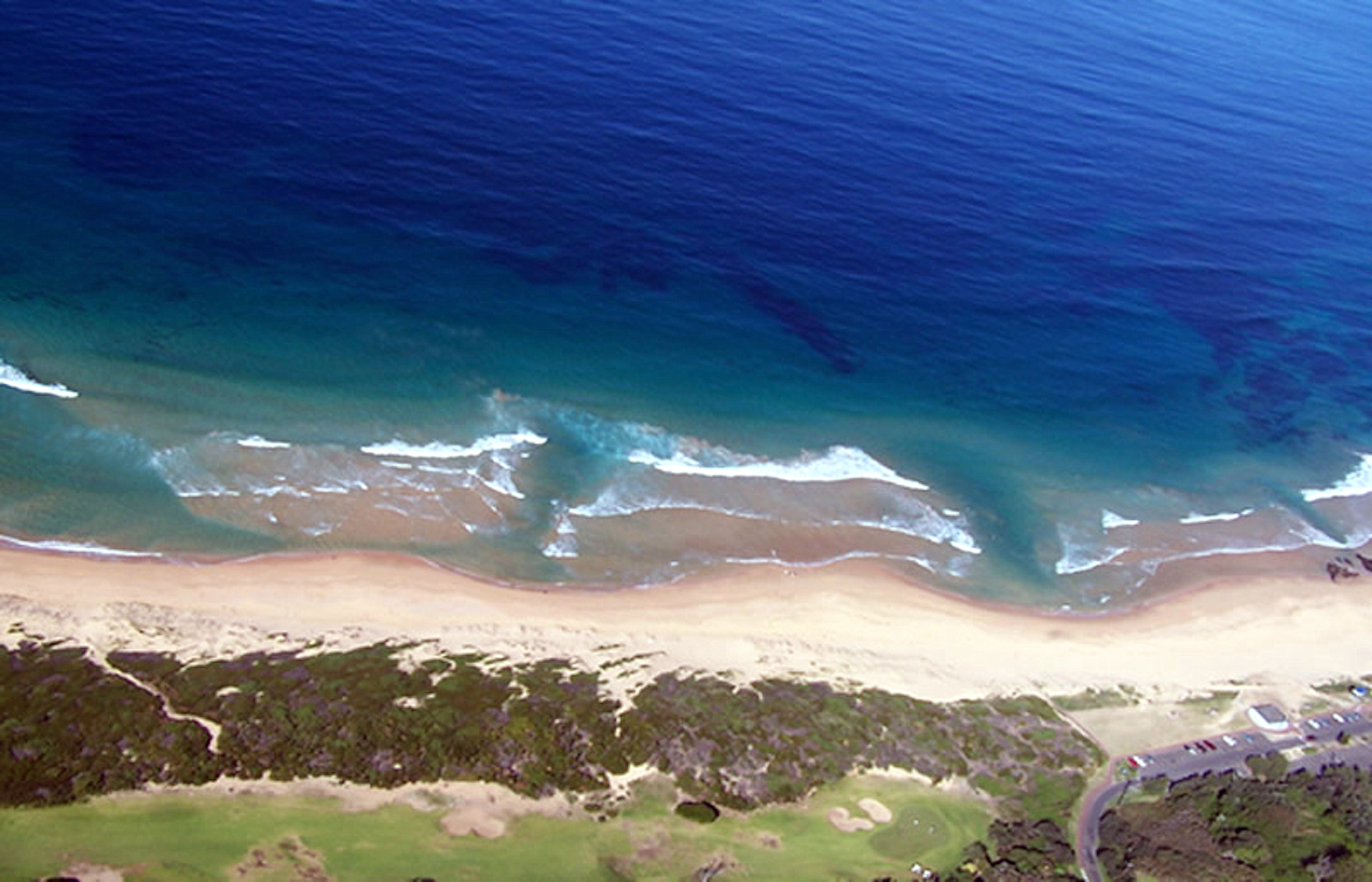Long Range Fish Report
From Sportfishing
From Sportfishing
Fish Report for 12-11-2015

Sentinel/Herald Fish Report
12-11-2015
Allen Bushnell
This week’s gigantic northwest swell is going to create improving wintertime structure along our Monterey Bay beaches. Just what we need to get surfperch fishing going in a big way. Perching has been quite productive over the past month, though the heavy wave activity this week made things difficult. Currents are very strong and there was lots of sea grass and kelp in the surf to snag lines. Once the wave action settles down next week, surfcasters will have new territory to explore.
Last week’s report looked at locating beach structure and conditions to find feeding perch. Once you are on the beach, the next question is “what gear to use.” There are quite a few options for successful surfcasting, in terms of gear.
Classic surfcasting rods are long and sometimes heavy, with an extended butt section for two-hand casting. Spinning rods and reels are preferred for easier casting. These big surf rods are best utilized when fishing bait with a double dropper loop rig and a terminal pyramid sinker. The sinker digs into a sandy bottom, allowing the bait to be suspended above the sand. Many anglers utilize a sand spike above the waterline to hold their rods then watch their rod tip for bouncing when a fish is hooked. This method of surf fishing also often includes a beach chair and a cooler to hold refreshments and to keep fresh caught fish on ice.
A more active method utilizes a lighter rod for repeated casts into the feeding zone for perch. Rod length can vary from six to 11 feet, and a 2500-size spinning reel is perfect. Most often, a sliding sinker rig is used, with an 18-36-inch leader, depending on the depth being fished. The leader terminates with a bait holder hook appropriate to the bait size being used, usually in the #1 - #6 range. Live bait such as sandcrabs, sandfleas, pileworms or sandworms work well with this rig.
Artificial baits are more often employed with this style of surfcasting. Curly tail or paddle tail grubs are proven perch catchers and an increasing selection of soft scented worms are available at your tackle shop. My favorite these days is the GULP two-inch Sandworm, in the “Camo” color.
Thread your artificial bait onto the hook, cast to the spot holding fish and retrieve slowly. When you get a nibble, stop your retrieve, take in the slack line and lower your rod tip.
Once you feel the perch is committed to eating your bait, smoothly lift the rod tip and start reeling. A little practice and you will get the feel of when to set the hook. With a light casting rig, 10-pound test is usually sufficient, and a leader of six to eight pounds works well. Both braided line and monofilament serve well while surfcasting. Braid is more problematic in terms of getting knotted up, but as pro angler JD Richey says, “Braid cuts the water better than mono, casts like a dream, has less stretch and significantly more sensitivity…all great properties when perch fishing.”
Last week’s report looked at locating beach structure and conditions to find feeding perch. Once you are on the beach, the next question is “what gear to use.” There are quite a few options for successful surfcasting, in terms of gear.
Classic surfcasting rods are long and sometimes heavy, with an extended butt section for two-hand casting. Spinning rods and reels are preferred for easier casting. These big surf rods are best utilized when fishing bait with a double dropper loop rig and a terminal pyramid sinker. The sinker digs into a sandy bottom, allowing the bait to be suspended above the sand. Many anglers utilize a sand spike above the waterline to hold their rods then watch their rod tip for bouncing when a fish is hooked. This method of surf fishing also often includes a beach chair and a cooler to hold refreshments and to keep fresh caught fish on ice.
A more active method utilizes a lighter rod for repeated casts into the feeding zone for perch. Rod length can vary from six to 11 feet, and a 2500-size spinning reel is perfect. Most often, a sliding sinker rig is used, with an 18-36-inch leader, depending on the depth being fished. The leader terminates with a bait holder hook appropriate to the bait size being used, usually in the #1 - #6 range. Live bait such as sandcrabs, sandfleas, pileworms or sandworms work well with this rig.
Artificial baits are more often employed with this style of surfcasting. Curly tail or paddle tail grubs are proven perch catchers and an increasing selection of soft scented worms are available at your tackle shop. My favorite these days is the GULP two-inch Sandworm, in the “Camo” color.
Thread your artificial bait onto the hook, cast to the spot holding fish and retrieve slowly. When you get a nibble, stop your retrieve, take in the slack line and lower your rod tip.
Once you feel the perch is committed to eating your bait, smoothly lift the rod tip and start reeling. A little practice and you will get the feel of when to set the hook. With a light casting rig, 10-pound test is usually sufficient, and a leader of six to eight pounds works well. Both braided line and monofilament serve well while surfcasting. Braid is more problematic in terms of getting knotted up, but as pro angler JD Richey says, “Braid cuts the water better than mono, casts like a dream, has less stretch and significantly more sensitivity…all great properties when perch fishing.”
< Previous Report Next Report >

LongRangeSportfishing.net © 2025. All Rights Reserved.
Website Hosting and Design provided by TECK.net
Website Hosting and Design provided by TECK.net
